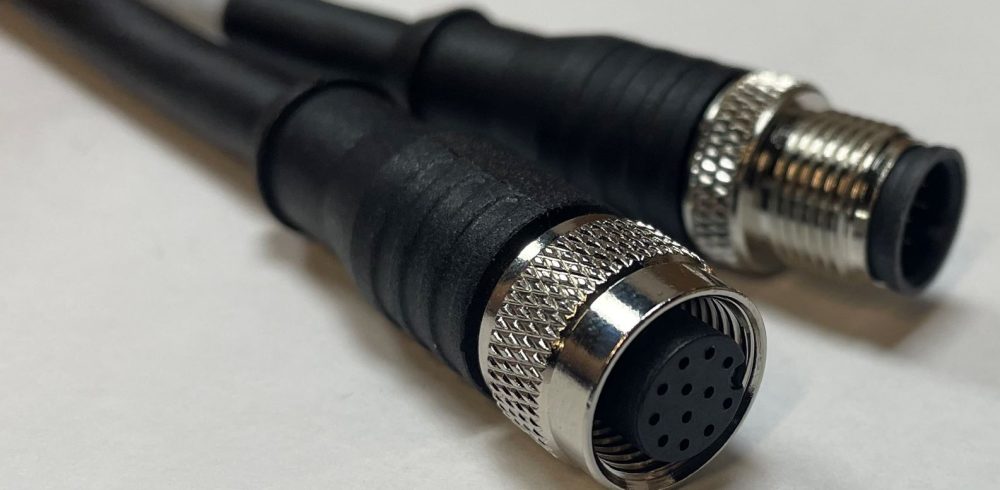M12 cables are circular connectors with a 12 mm locking thread and have become the standard for use in factory automation applications. There are many different types of coding for instrumentation cables, but what are they all for? Most users of M12 cables are familiar with codes A through D and possibly X.
A Code
A-code (also known as Micro-DC) is the most widely used coding in factory automation applications of all the types. These connectors are used in data applications primarily involving DC power. A-coding is used for attaching actuators, attenuators, sensors, AI-vision systems, motor-operated switches and other devices. A-coded connections are also used to transfer up to 1-Gbit of data in Ethernet applications and can have anywhere from 2 to 17 pin positions.
B Code
B-code is unique in that it contains a reversed single keyway, which allows 2 unique M12 connections to be mounted on the same panel without the risk of incorrectly coupling connections to equipment with varying voltage and amperage. B-coding is used in fieldbus connections involving Profibus and Interbus. B-coding connectors typically have anywhere from 3 to 5 pins.
C Code
C-code (also known as Micro-AC) is strictly used in cases where AC current is involved, such as with AC actuators, sensors and other AC devices, it is not as commonly used as the other types. Connections with C-coding all have extended grounding pins and double keyways for added safety, to prevent them from being mistaken for other similar-looking connections and being coupled with the wrong cables. C-coding connections have anywhere from 3 to 6 pins.
D Code
D-code is specifically used in network cables for industrial Ethernet applications to transfer data up to 100-Mbits. The insides of cables with this type of coding consist of either 4 wire connectors (D-coding) with 2 pairs of Cat 5e cables or M12 8 wire (A-coding) connectors with 4 pairs of Cat 5e cable.
D-coding can also be used with Profinet, Ethernet/IP and EtherCat systems. D-coded connections usually have 3 to 5 pins.
X Code
X-code has been introduced more recently and is quickly becoming a standard for use with high-speed industrial Ethernet applications. X-coding has is able to transfer large amounts of data at high speeds, up to 10-Gbits of data. X-coding is expected to eventually replace A and D coded parts for Ethernet applications. X-coding applications include high-speed industrial Ethernet and Cat6A, this code always has 8 pins.
New Codes
There are more codes in addition to these and some have been designed to replace existing codes.
These include L, S and T for Power applications, and P code for applications requiring quick connect / disconnect.
Mueller M12 Cables
Mueller M12 cables provide a cost efficient and flexible plug-and-play connectivity solution for onsite installations, features include;
- Industry-standard screw-locking mechanism
- IP67 or higher degree of protection
- A, B, C, D & X-Coding options
- Field-installing cable and panel-mount options
- Moulded straight and right-angle variants
- Pin range – 2, 3, 4, 5, 6, 8, 12 and 17 positions
- Shielded options PVC or PUR
You can view our range by visiting our on-line catalogue.
If you don’t see what you need or you have bespoke requirements please get in touch, we have developed and manufactured new solutions for a wide range of applications and industries.
Manufacturing & Engineering Magazine | The Home of Manufacturing Industry News















